It's primary function is to provide rotation, which may translate to the upper body for use during blocking or striking. The front/back foot position enables you to deliver better hip rotation to your strikes than one of the parallel stances (Kiba-dachi, Heiko-dachi, Shiko-dachi), and this means that your strikes will have more power.
The rotation also enables you to twist from below the waist for evasion or groin protection. In fact, it is the groin protecting nature of this stance that has lead to a common misconception. People believe that to protect the groin, the knees are brought together, which in fact provides very little protection, especially against knees and thrusting kicks, but this misconception has resulted in tjhousands of students practicing this stance in a way that makes them look knock kneed. In actual fact, Sanchin Dachi protects the groin by enabling you to turn the genitals to the side, away from a frontal attack, placing your thighs in the way of danger
With the feet apart, it's quite a natural stance, halfway between Hangetsu-dachi and Heiko-dachi. Despite its relatively high-posture, it's quite a rooted, stable stance. However, its height makes it easy for you to deliver kicks. Sanchin-dachi is an ideal defensive posture for close-up fighting, and is sometimes used as a base for grappling.
Technique:
| # | Description |
|---|---|
| 1. | Your rear foot should be facing directly forwards. Your front foot should be placed one shoulder-width apart from your back foot, facing inwards at an angle of 45 degrees measured on the INSIDE of the foot. We used to set the angle by the outside, but this created an unnatural and slightly ungainly stance. The heel of your front foot should line up with the toes of your rear foot. |
| 2. | Your knees should be tensed in a diagonal direction, and it is this inner tension, combined with gripping the floor with your toes, that helps to give this stance additional solidity. |
| 3. | Although this stance makes you want to set your body at an angle to the front, your hips and body both face forwards. Your weight should be lowered a little, and your knees should be somewhat bent. |
| 4. | Tuck your hips by rolling your groin upwards and tensing your butt cheeks. Your stomach should also be tensed. |
| 5. | You'll often see experts slouching their shoulders in this stance, but I have no idea if this is desirable, or why it is done. |
Common mistakes to avoid:
- Don't bring your knees together.
- Ensure that your knees are bent.
- Don't stick your butt out.
- Make sure your hips are facing forwards.
- Make sure that your feet are at least a shoulder width apart - and even slightly more if you are taller.
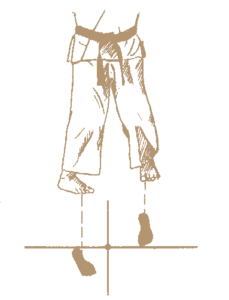
Sanchin-dachi (hourglass stance).
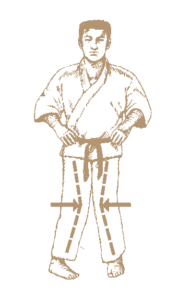
Knees strongly compact.
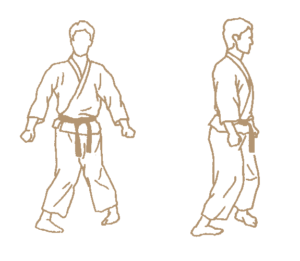
View of the sanchin-dachi posture.
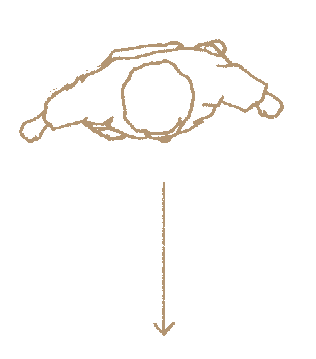
Top view of the sanchin-dachi attitude.
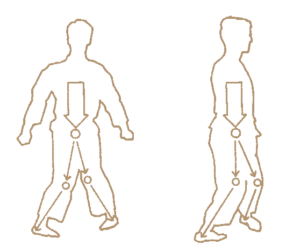
Distribution of gravity in sanchin-dachi.
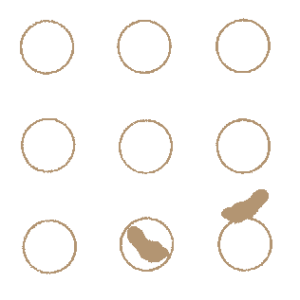
Putting feet in sanchin-dachi in the exercise on stumps.






